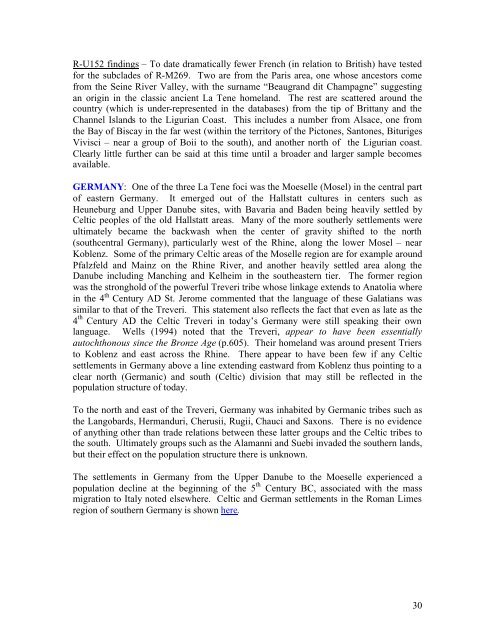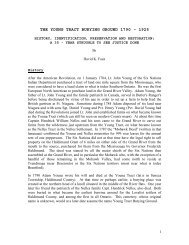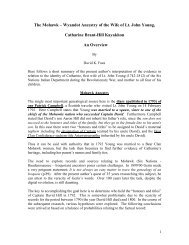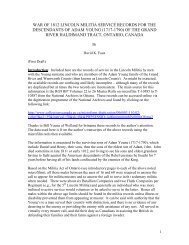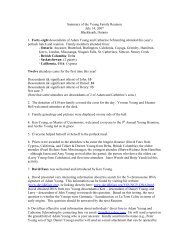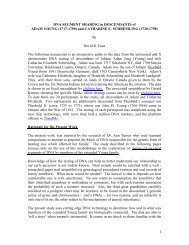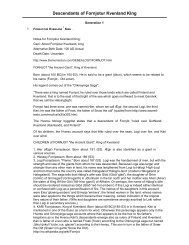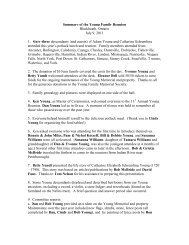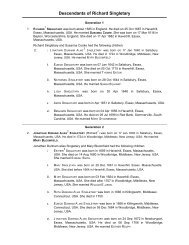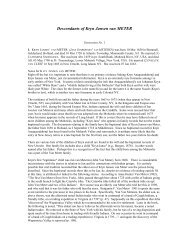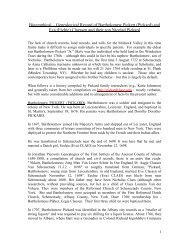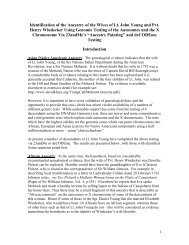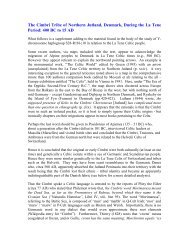Part 2 - Davidkfaux.org
Part 2 - Davidkfaux.org
Part 2 - Davidkfaux.org
You also want an ePaper? Increase the reach of your titles
YUMPU automatically turns print PDFs into web optimized ePapers that Google loves.
R-U152 findings – To date dramatically fewer French (in relation to British) have testedfor the subclades of R-M269. Two are from the Paris area, one whose ancestors comefrom the Seine River Valley, with the surname “Beaugrand dit Champagne” suggestingan origin in the classic ancient La Tene homeland. The rest are scattered around thecountry (which is under-represented in the databases) from the tip of Brittany and theChannel Islands to the Ligurian Coast. This includes a number from Alsace, one fromthe Bay of Biscay in the far west (within the territory of the Pictones, Santones, BiturigesVivisci – near a group of Boii to the south), and another north of the Ligurian coast.Clearly little further can be said at this time until a broader and larger sample becomesavailable.GERMANY: One of the three La Tene foci was the Moeselle (Mosel) in the central partof eastern Germany. It emerged out of the Hallstatt cultures in centers such asHeuneburg and Upper Danube sites, with Bavaria and Baden being heavily settled byCeltic peoples of the old Hallstatt areas. Many of the more southerly settlements wereultimately became the backwash when the center of gravity shifted to the north(southcentral Germany), particularly west of the Rhine, along the lower Mosel – nearKoblenz. Some of the primary Celtic areas of the Moselle region are for example aroundPfalzfeld and Mainz on the Rhine River, and another heavily settled area along theDanube including Manching and Kelheim in the southeastern tier. The former regionwas the stronghold of the powerful Treveri tribe whose linkage extends to Anatolia wherein the 4 th Century AD St. Jerome commented that the language of these Galatians wassimilar to that of the Treveri. This statement also reflects the fact that even as late as the4 th Century AD the Celtic Treveri in today’s Germany were still speaking their ownlanguage. Wells (1994) noted that the Treveri, appear to have been essentiallyautochthonous since the Bronze Age (p.605). Their homeland was around present Triersto Koblenz and east across the Rhine. There appear to have been few if any Celticsettlements in Germany above a line extending eastward from Koblenz thus pointing to aclear north (Germanic) and south (Celtic) division that may still be reflected in thepopulation structure of today.To the north and east of the Treveri, Germany was inhabited by Germanic tribes such asthe Langobards, Hermanduri, Cherusii, Rugii, Chauci and Saxons. There is no evidenceof anything other than trade relations between these latter groups and the Celtic tribes tothe south. Ultimately groups such as the Alamanni and Suebi invaded the southern lands,but their effect on the population structure there is unknown.The settlements in Germany from the Upper Danube to the Moeselle experienced apopulation decline at the beginning of the 5 th Century BC, associated with the massmigration to Italy noted elsewhere. Celtic and German settlements in the Roman Limesregion of southern Germany is shown here.30


